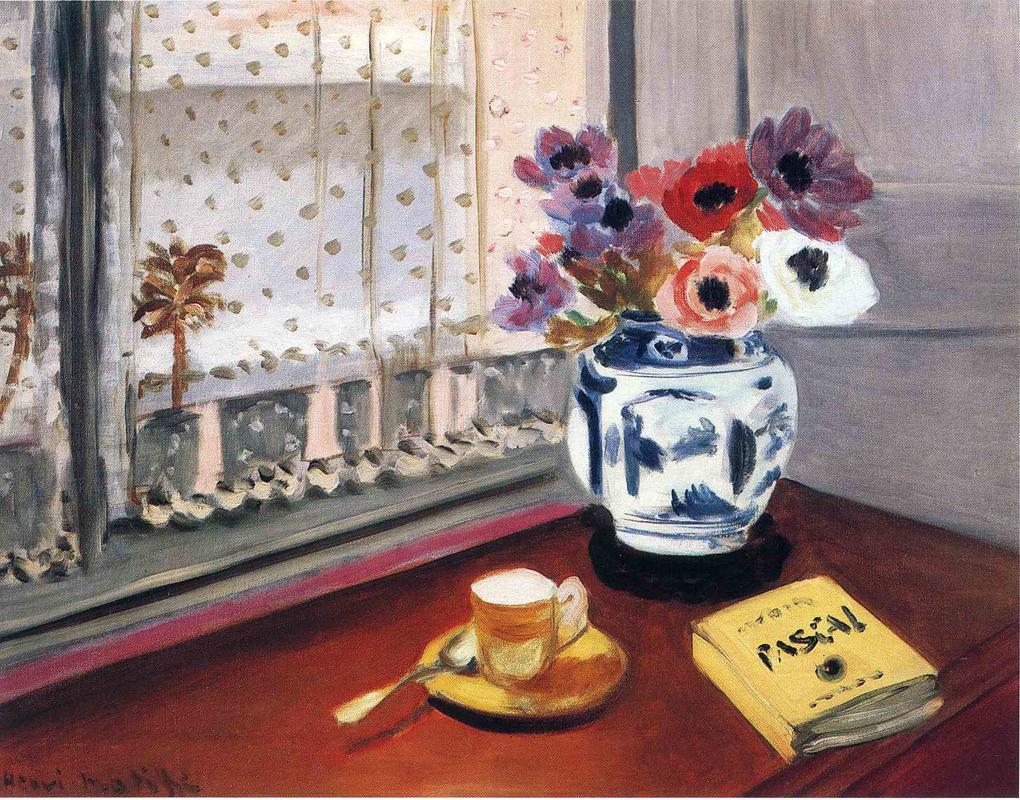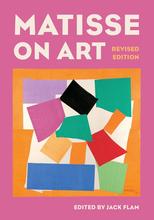More about Still Life with Pascal's "Penses"
- All
- Info
- Shop

Contributor
Three years before his Still Life with Pascal's Pensées, Matisse found a new spot at 1 Place Charles-Félix in Nice, France, where he stayed for seven years.
Moving from the frenetic pace of Paris to a smaller place, Matisse relished the opportunity to say hello to people and hear them say hello back, slow down a bit, and focus on his paintings.
During this period, Matisse was interested in producing paintings of nude women and still lifes. At least one of these women, Henriette Darricarrère, when she was clothed, performed as a musician and dancer, and was a kind of surrogate daughter to Matisse and his wife - until she went off and married a young man, which made Matisse so upset that he went and got drunk with her father at a café.
One of Pascal's most famous ideas is "Pascal's wager," which features in his "Pensées" (or "Thoughts," a collection of his written works.) At its very best, the wager can resuscitate trust in a monotheistic faith, and at its very worst, it reduces devotion to a slot machine. In response to rationalism and atheism, Pascal wants to get down to brass tacks: look, he says, I know that you don't believe in a higher power, but what if I told you that you have nothing to lose by changing your mind, and everything to gain in heaven? It was a compelling sales pitch for Matisse and many of his contemporaries, who also followed Pascal's idea that if your faith is getting a little stale, just pray, and then you will start to believe.
Matisse birthed this painting in the decade which saw the first book on him, by Marcel Sembat. When they publish a book on you, it can be flattering, but many artists are aware that flattery can bolster the ego and the ego can damage the work. In response to his fame, Matisse courted some degree of introspective behavior. The Instagram celebrities of the world sometimes post photos of their spiritual inspirations, and Still Life with Pascal's Pensées, likewise, is Matisse's way of telling fans and critics that he cares about the Divine Being, too, not just nude women.
Sources
- Armour, Leslie. "Infini Rien": Pascal's Wager and the Human Paradox. Carbondale, IL: Southern Illinois University Press, 1993.
- Bock-Weiss, Catherine. Henri Matisse: A Guide to Research. New York: Garland, 1996.
- Flam, Jack D. Matisse on Art. Berkeley, CA: University of California Press, 1995.
- McPhee, Laura. A Journey Into Matisse's South of France. Berkeley, CA: Roaring Forties Press, 2007.













Looking at Henri Matisse's Still Life with Pascal's "Penses" brought me a sense of peace. The colors are soft, the scene is not dramatic; everything feels relaxed. I like how Matisse painted with thick brush strokes, and ignored any sense of line. Rather, it seems that Matisse's style of painting has been influenced by impressionism.